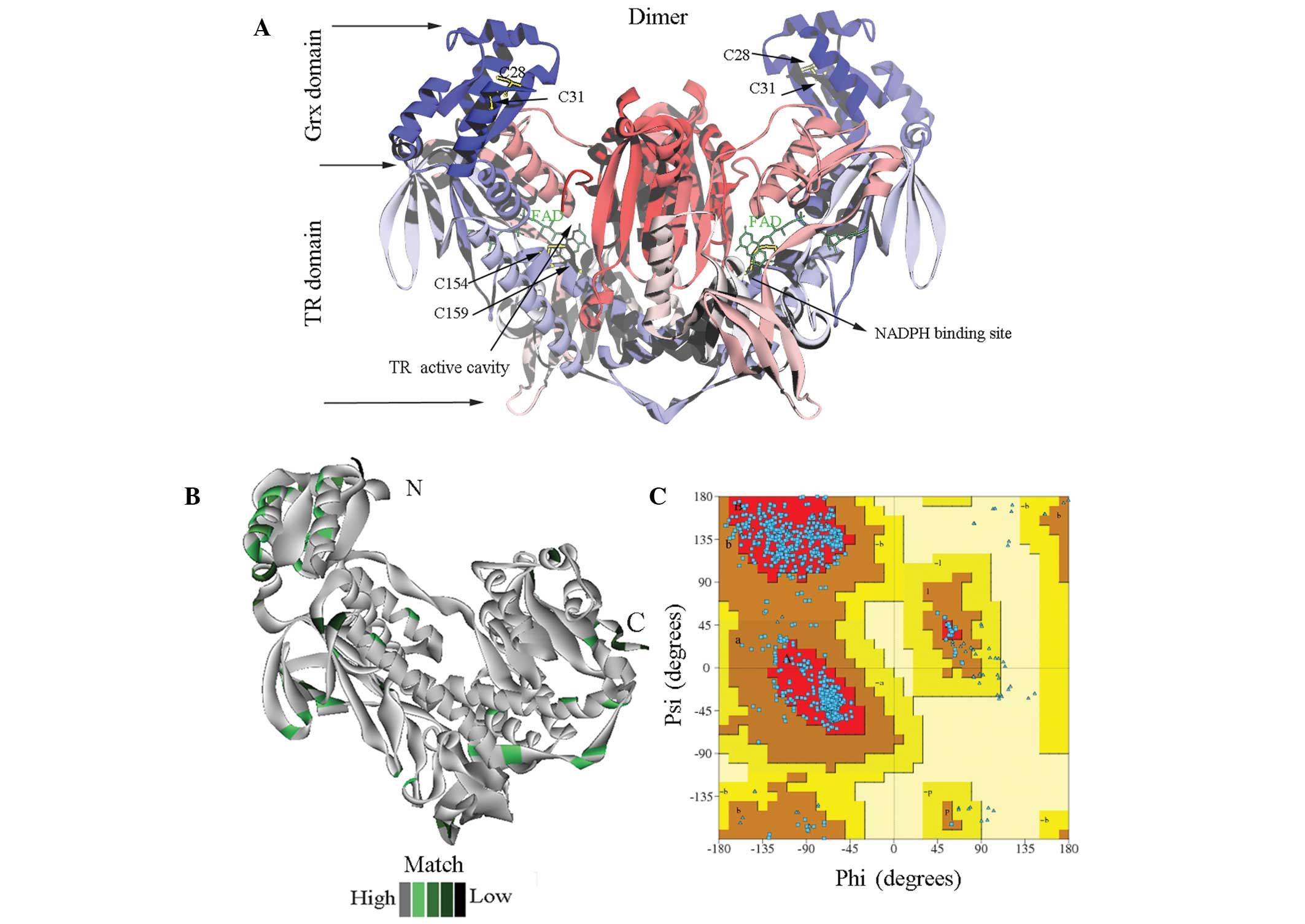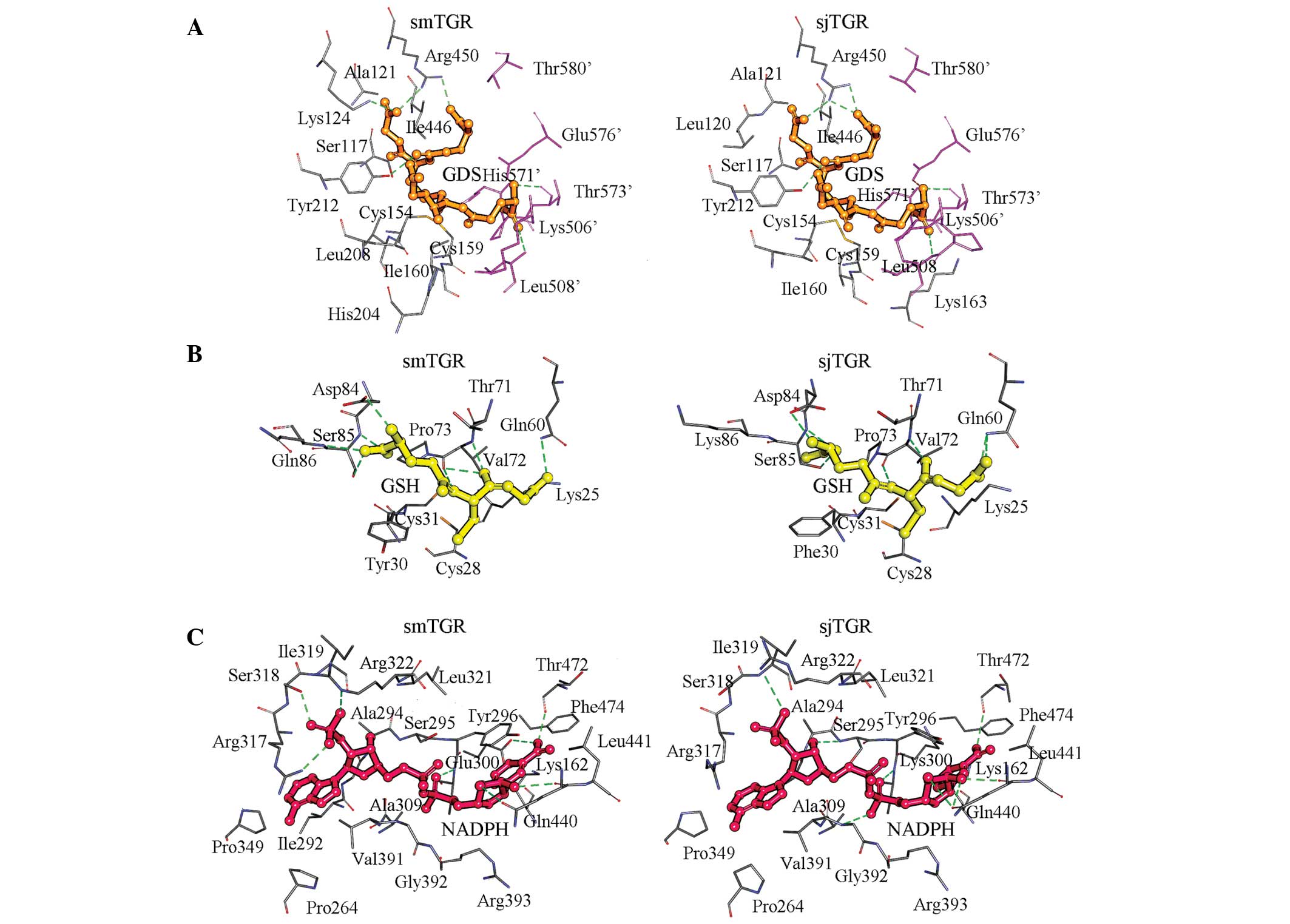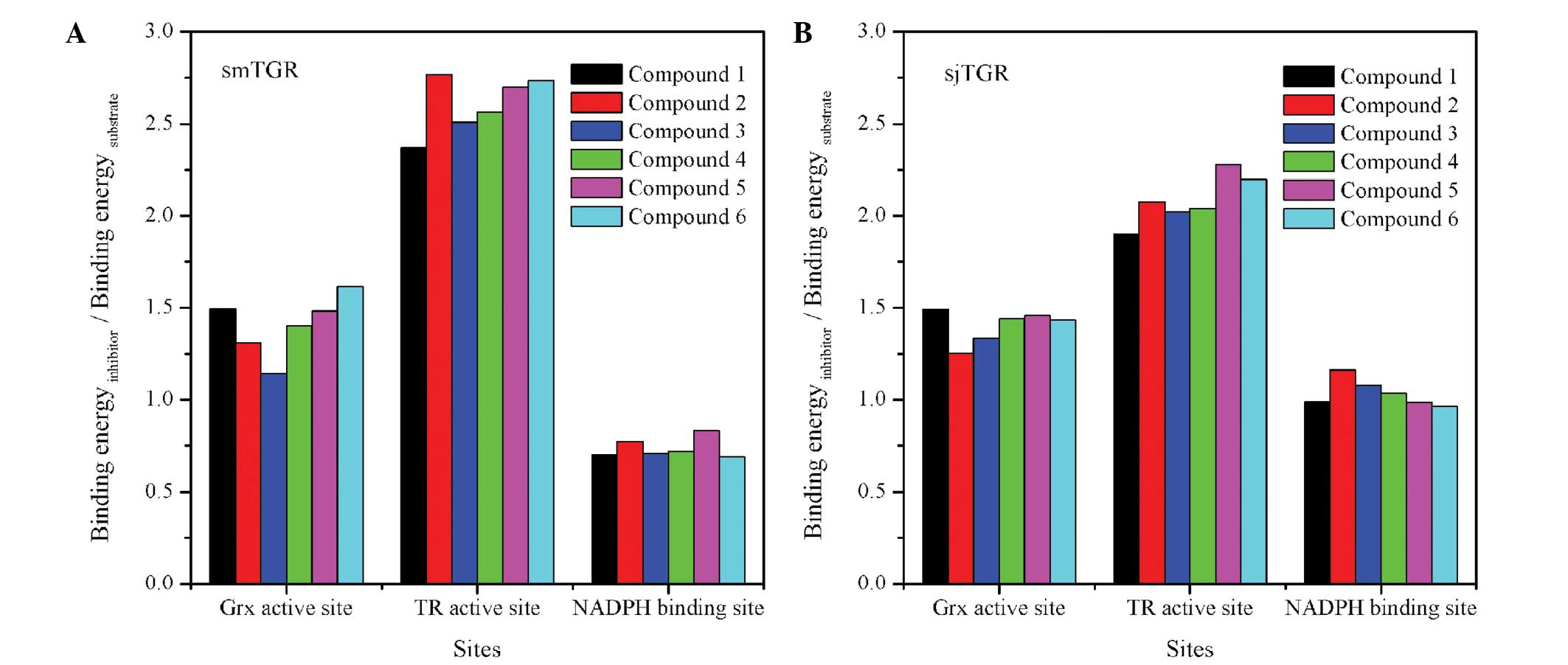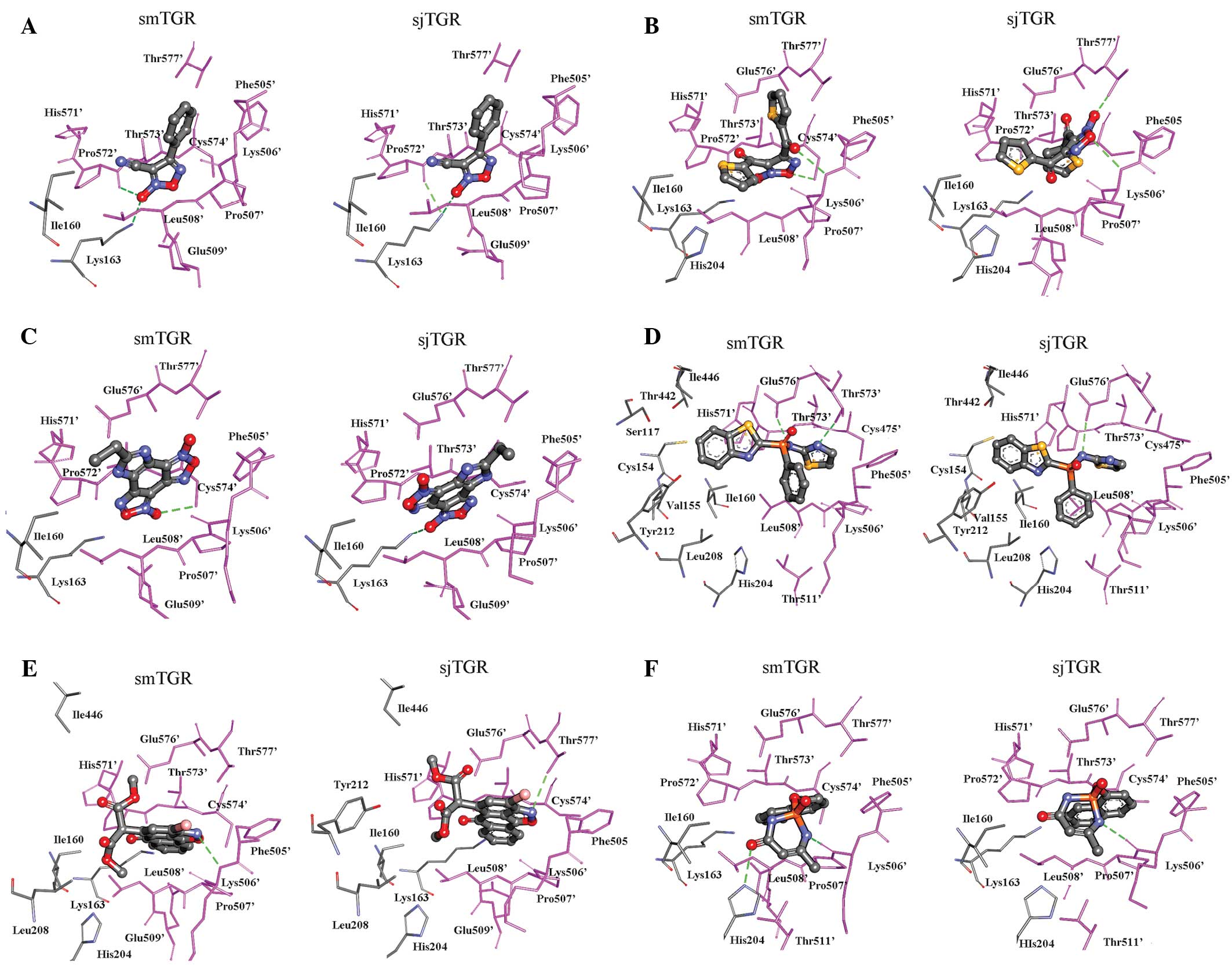Molecular docking to explore the possible binding mode of potential inhibitors of thioredoxin glutathione reductase
- Authors:
- Published online on: July 27, 2015 https://doi.org/10.3892/mmr.2015.4119
- Pages: 5787-5795
-
Copyright: © Huang et al. This is an open access article distributed under the terms of Creative Commons Attribution License.
Metrics: Total
Views: 0 (Spandidos Publications: | PMC Statistics: )
Total PDF Downloads: 0 (Spandidos Publications: | PMC Statistics: )
Abstract
Praziquantel (PZQ) is the treatment of choice for schistosomiasis, one of the most important but neglected tropical diseases. Recently, however, Schistosoma have exhibited reduced susceptibility to PZQ, and an urgent need to develop new drugs to treat schistosomiasis has emerged. Thioredoxin glutathione reductase (TGR) plays a crucial role in the redox balance of the parasite, combining glutaredoxin (Grx), glutathione reductase and thioredoxin reductase (TR) activities. Several compounds, including oxadiazole 2‑oxides, phosphinic acid amides, isoxazolones and phosphoramidites, have been identified as agents that inhibit TGR from Schistosoma mansoni (smTGR) and exhibit anti‑schistosomal activity. 4‑Phenyl‑1,2,5‑oxadiazole‑3‑carbonitrile‑2‑oxide has also been shown to be active against TGR from Schistosoma japonicum (sjTGR). The binding sites of these inhibitors, however, remain unclear. To explore the binding interactions of these compounds, we selected six compounds to dock into the NADPH binding site, the active site of the TR domain and the Grx active site of both smTGR and sjTGR using AutoDock 4.2.5.1. The results suggested that the most favoured binding site for all compounds in either sjTGR or smTGR was the oxidised glutathione‑binding pocket of the TR domain. Although all of the compounds could fit into the sjTGR site, the inhibition efficiency of these compounds towards sjTGR was marginally lower than it was towards smTGR, suggesting that it would be necessary to design specific inhibitors of TGR for different Schistosoma species. The docking results showed that all compounds docking in smTGR and sjTGR adopted similar binding modes in the TR domain. Two peptide fragments from another subunit, Phe505'‑Leu508' and Pro572'‑Thr577', played a critical role in the interactions with the inhibitors. In conclusion, the present study has revealed binding mechanisms for potential inhibitors of Schistosoma TGRs and could lead to structure‑based ligand design and the development of new anti-schistosomiasis drugs.













